That Useful Wine Site
Search, or just roll your cursor over the colored boxes farther below.click the “x” to dismiss Search-results block.
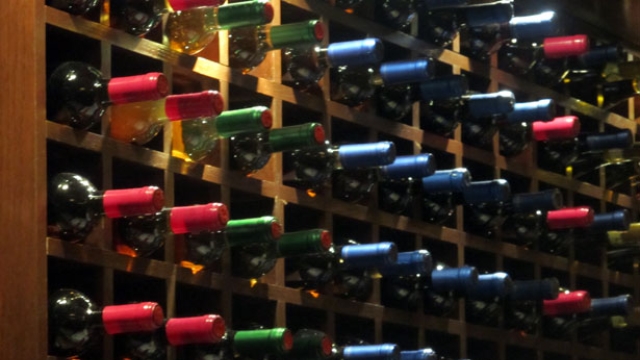
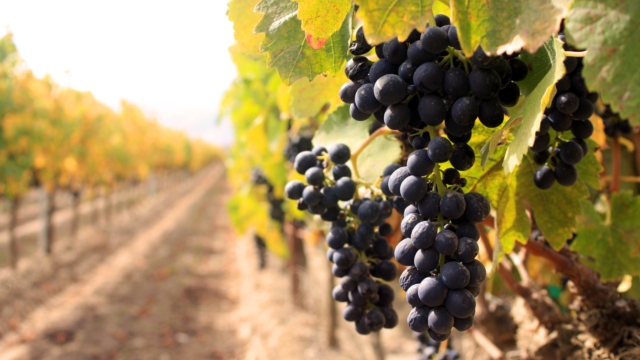
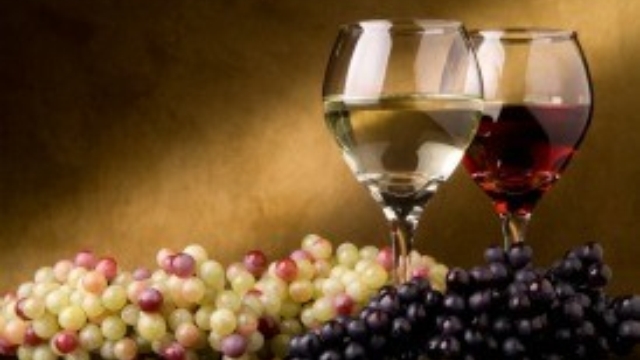
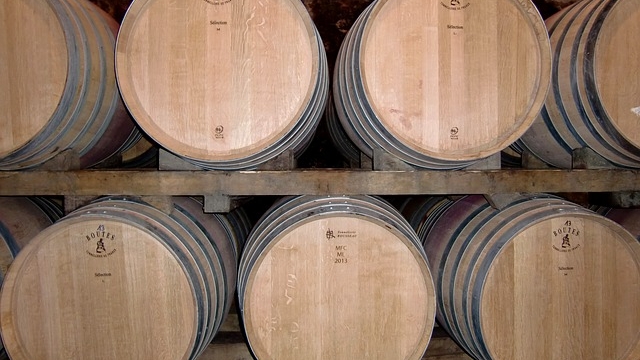
Advertisement:
Advertisement:
Quick page jumps:
(Synonyms: Agreste, Auxerrois, Bouyssales, Cagors, Cahors, Coq Rouge, Cor, Cors, Cos, Côt, Cots, Estrangey, Étranger, Lutkens, Malbeck, Malbech, Mancin, Noir de Pressac, Nuar de Presac, Pied De Perdrix, Pressac, Prunelat, Pressac, Quercy)
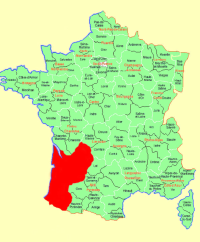
Malbec is a red-wine grape associated with the Bordeaux region of France, but now also widely grown world-wide, most especially in Argentina, where it is considered that nation’s “signature” varietal, now also much grown in Chile. In France itself, Malbec, while present throughout Bordeaux (where it is a permitted ingredient in all Bordeaux red blends), is mainly grown in the Cahors region. Ironically, the evidence suggests that the grape, under the still-common synonym of Côt, originated in Burgundy, not Bordeaux. It is today surging in popularity (and runs the risk of being a “fad” wine, like Grüner Veltliner for whites); indeed, Malbec is today widely considered one of the dozen and a half or so “Noble wine grapes” of the world.
The wines of Malbec are not drastically dissimilar to the other Bordeaux reds (especially Cabernet Sauvignon and Cabernet Franc, though also Merlot for younger Malbecs). In Bordeaux blends, Malbec adds darkness of color, tannins, and a distinctive plummy flavor. When bottled as a monovarietal, it produces very inky-dark wines of an intense nose and flavor, rich and fruity in nature. They are characterized by the typical dark-red fruit flavors, ranging down to plum, damson, and even raisin. There are overtones of other sorts, from leather and tobacco to herbs (even, some say, garlic). Malbec, however, can usually be picked out from the other Bordeaux by its sharpness, though poorer specimens, typically from warmer areas, can be a bit feeble and flabby.
Of the French renditions, those from Cahors are much preferred, the more generic Bordeaux renditions being somewhat softer and, as Jancis Robinson put it, “rustic” (a Cahors red must by law be at least 70% Malbec). Argentine Malbecs can be quite good but, despite their eminent reputation, if grown in warmer regions, somewhat pallid and weak shadows of good Malbec; good Argentine Malbecs tend to be less aggressively tannic and powerful—more “plush”, as some say—than Cahors renditions (it is considered possible that Argentine Malbec vines are of different clones than French). The best Argentine Malbec is said to be that from high-altitude plantings, notably those in Mendoza (the Luján de Cuyo and Uco Valley districts). Malbec is also successful in other cool-climate growing regions, such as Washington State. Chilean Malbec from Chile’s Central Valley wine region are less like Argentine wines and more like Cahors styling, generally being more tannic than their Argentine counterparts.
If you only became aware of Malbec from the skyrocketing popularity of Argentine bottlings, you need to be aware that there is now a major renaissance going on in Cahors, the historical home of Malbec (where till recently it was known as Auxerrois, and once as Côt). Centuries ago one finds frequent references to “the black wines of Cahors”, and today’s marketing slogan—a catchy one indeed—is The black is back! Cahors will never come remotely close to the production levels of the larger South American wineries, whose output is on a level with the Gallo Brothers, but they have a product and a message.
Modern Cahors is, however, experiencing an identity problem. They want to ride the wave of popularity for Malbec that Argentina has generated, but the vintners seem unsure which way to jump: make Malbecs that emulate the popular Argentine types, meaning softer, fruitier, and above all more immediately accessible (lower tannins); or emphasize the traditional and rather different old Cahors style of huge, powerful, tannic monsters that need some years of bottle age to get round the rough edges. Nowadays, one can find not a few examples of both kinds out there, so do not assume that a Cahors red is necessarily much different from an Argentine one; it may be much the same, or it may be wildly different. You need to know which kind you’re seeking and which kind a given wine is if you are to avoid disappointment (not to say actual shock). Note: Cahors reds almost invariably want a lot of aeration prior to serving: decanting some hours ahead of time is frequently recommended.
Factoid: “Auxerrois” and “Côt” as synonyms are nothing: Malbec has had, in its time, over a thousand different synonym names.
There seems more decent-or-better quality Malbec than any other red wine. The list below is the outcome of a set of difficult choices, but that’s a nice problem to have!
Note that “Old World” (Cahors, France) Malbecs are, in the U.S. retail market, hard to find at reasonable prices for decent yet available bottlings.
• This wine’s Wine Searcher “Reviews” page.
• This wine’s CellarTracker review pages.
• Retail offers of this wine listed by Wine Searcher.
• Retail offers of this wine listed by 1000 Corks.
• This wine’s Wine Searcher “Reviews” page.
• This wine’s CellarTracker review pages.
• Retail offers of this wine listed by Wine Searcher.
• Retail offers of this wine listed by 1000 Corks.
• This wine’s Wine Searcher “Reviews” page.
• This wine’s CellarTracker review pages.
• Retail offers of this wine listed by Wine Searcher.
• Retail offers of this wine listed by 1000 Corks.
• This wine’s Wine Searcher “Reviews” page.
• This wine’s CellarTracker review pages.
• Retail offers of this wine listed by Wine Searcher.
• Retail offers of this wine listed by 1000 Corks.
• This wine’s Wine Searcher “Reviews” page.
CellarTracker has two separate listings for this wine:
• This wine’s CellarTracker review pages.
• This wine’s CellarTracker review pages.
• Retail offers of this wine listed by Wine Searcher.
• Retail offers of this wine listed by 1000 Corks.
• This wine’s Wine Searcher “Reviews” page.
• This wine’s CellarTracker review pages.
• Retail offers of this wine listed by Wine Searcher.
• Retail offers of this wine listed by 1000 Corks.
• This wine’s Wine Searcher “Reviews” page.
• This wine’s CellarTracker review pages.
• Retail offers of this wine listed by Wine Searcher.
• Retail offers of this wine listed by 1000 Corks.
• This wine’s Wine Searcher “Reviews” page.
• This wine’s CellarTracker review pages.
• Retail offers of this wine listed by Wine Searcher.
• Retail offers of this wine listed by 1000 Corks.
Regrettably, there are no “splurge-level” Cahors wines at prices plausible even for a splurge, so we present only a New World candidate.
Our nomination for that, an Argentine Malbec, is the Familia Zuccardi Paraje “Aluvional” Altamira, which retails for about $69 to $105.
• This wine’s Wine Searcher “Reviews” page.
CellarTracker has two separate listings for this wine:
• This wine’s CellarTracker review pages.
• This wine’s CellarTracker review pages.
• Retail offers of this wine listed by Wine Searcher.
• Retail offers of this wine listed by 1000 Corks.
Advertisement:
Advertisement:
|
|
This site is one of The Owlcroft Company family of web sites. Please click on the link (or the owl) to see a menu of our other diverse user-friendly, helpful sites. |
|
| (Note: All Owlcroft systems run on Ubuntu Linux and we heartily recommend it to everyone—click on the link for more information). | ||
|
All content copyright © 2024 The Owlcroft Company
(excepting quoted material, which is believed to be Fair Use). |
This web page is strictly compliant with the W3C (World Wide Web Consortium) Extensible HyperText Markup Language (XHTML) Protocol v1.0 (Transitional) and the W3C Cascading Style Sheets (CSS) Protocol v3 — because we care about interoperability. Click on the logos below to test us!
This page was last modified on Saturday, 30 October 2021, at 11:26 pm Pacific Time.
Some Descriptions of Malbec Wines
“Wine expert Jancis Robinson describes the French style of Malbec common in the Libournais (Bordeaux region) as a ‘rustic’ version of Merlot, softer in tannins and lower in acidity with blackberry fruit in its youth. The Malbec of the Cahors region is much more tannic with more phenolic compounds that contribute to its dark color. Oz Clarke describes Cahors’ Malbec as dark purple in color with aromas of damsons, tobacco, garlic, and raisin. In Argentina, Malbec becomes softer with a plusher texture and riper tannins. The wines tend to have juicy fruit notes with violet aromas. In very warm regions of Argentina, Chile, and Australia, the acidity of the wine may be too low which can cause a wine to taste flabby and weak. Malbec grown in Washington state tends to be characterized by dark fruit notes and herbal aromas.”
“Malbec is typically a medium to full-bodied, dry red wine with plenty of acidity and higher tannin and alcohol levels. Dark, inky purple color profiles and ripe fruit flavors of plums, black cherry and blackberry can give this wine a decidedly jammy character. Smoke, earth, leather, wild game, tobacco and white/black pepper along with a slew of high profile spices can make for an interesting medley of aromas and flavors, adding to layers of complexity and unique food pairing profiles.”
“ARGENTINA: The main fruit flavors in a glass of Argentine Malbec are blackberry, plum and black cherry. The nuanced flavors offer milk chocolate, cocoa powder, violet flowers, leather and, depending on the amount of oak aging, a sweet tobacco finish.
FRANCE: While Argentine Malbec is fruit forward, France is quite the opposite. Malbec from the Cahors region is, at first, leathery with flavors of tart currant, black plum and savory bitterness often described as green. French Malbecs, from the Loire and Cahors, have higher acidity which attributes to flavors described as black pepper and spice. Because of their moderate tannin and acidity with lower alcohol, French Malbec wines tend to age longer.”
“Broadly speaking, French Malbec tends to be more meaty, rustic and tannic, while examples from Argentina seem to be uniformly rich, ripe, jammy and juicy. On both sides of the Atlantic, Malbec wines are generally aged in oak to enhance the wine’s structure and aging potential.”
“Malbec, the flagship red grape of Argentina, may make the world’s most user-friendly wine. With its saturated violet hue, aromas and flavors of black cherries and milk chocolate, ripe, velvety tannins and full body, it epitomizes the New World style in red wines. . Malbec is no tannic steak wine. Its voluptuous richness makes it a comfort wine for comfort foods — beef stews, coq au vin, macaroni and cheese, lasagna, burritos, hamburgers or chili — be it red-bean, beef or chicken. With a bit of nerve, you could serve it at dessert with chocolate brownies or sliced strawberries with balsamic vinegar on ice cream.”
“Good Argentine Malbec, and there is a great deal of it for Argentina is one of the world’s most prolific wine producers, is deeply coloured, spicily rich with an exuberant juiciness and has as a trademark an almost velvety texture.”
“The ripe and plush Malbec wines of Argentina feature dark fruit flavors of blackberry, blueberry and black raspberry and supple tannins, with nuances of violets and toasty oak in the more expensive offerings.”
“Argentine producers have dramatically cut yields and replaced large old wood casks with oak barriques. They’ve taken more care in selecting appropriate planting sites, developing cooler, high altitude vineyards that benefit from warm days and cool nights. International consultants have arrived, too, imparting up-to-date knowledge about vinification techniques as well as a sense of what style of wines compete successfully in the international wine mark et. Some are critical of this trend, arguing that it leads to homogenization of wine styles. Maybe so, but we still feel that some of these improvements are certainly welcome, for the best Malbecs are polished, structured, and concentrated, but still showcase the local terroir.”
“However, Malbec is fairly sensitive to its climate. In cooler conditions (in Mendoza, this normally means a higher altitude) it is a thick-skinned grape which develops high acidity and tannic content, giving rise to more robust wines. At lower altitudes the grapes have thinner skins, more juice, and produce wines that are lighter-bodied and more suited to drinking young. Flavours most commonly associated with Malbec include plums, cherries, currants and raspberries. Fruit, as well as colour, may be perceived as black or red depending on the origin of the fruit, as well as the wine-making style. Argentine Malbec is generally liberally oaked, and even the earlier drinking styles reflect the resulting flavours – vanilla, spice, as well as occasional tobacco notes.”
“Part of the [Cahors] marketing and educational strategy has been to segment Cahors production into three levels, known as ‘Tradition’, ‘Prestige’ and ‘Spéciale’. This is a voluntary code, but one which is very widely adhered to. So that consumers can know broadly what to expect, each of the three levels is meant to fit a certain stylistic profile and price bracket…Higher proportions of Merlot and Tannat appear in the ‘Tradition’ wines too, which are normally blends, whilst at the ‘Spéciale’ level the majority of wines are 100% Malbec. Each of the three tiers fits a recommeded price bracket too: under 7€, 7 to 14€, and over 14€ respectively. But some of the top estates fetch significantly more.”
“Apart from the fact that they are both red, one can hardly recognise a relationship between most of the Malbec produced in Cahors and that produced in its modern home, Argentina.”